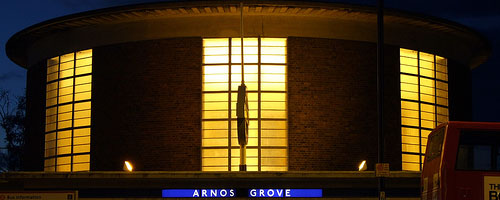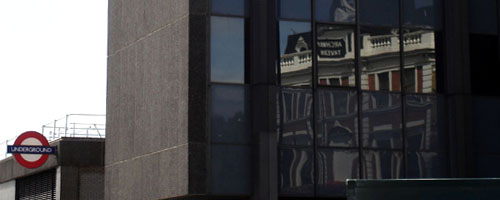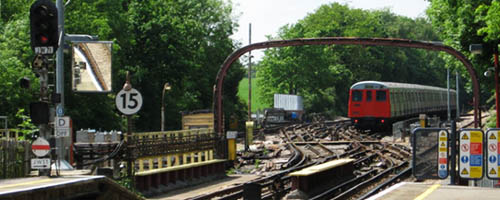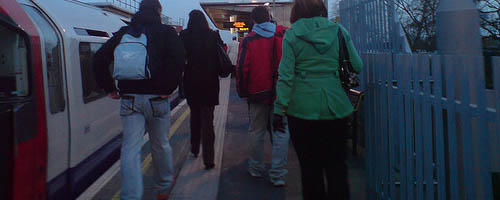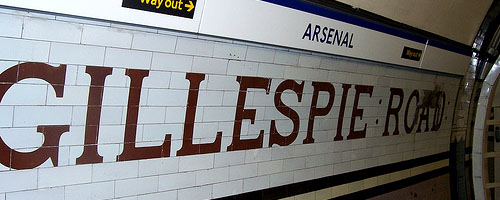
Picture by bods: Gillespie Road Wall Sign
The station is named after the football team, and the football team is named after war.
It’s not quite that simple, and to follow the story properly you need to look back a hundred and twenty years. Fortunately the Highbury Local Transport History Association is good at that sort of thing; they’ve made charts.
1886. On the south of the river, workers from Woolwich Arsenal start a football team. They call it Dial Square.
1891 and the team goes professional; they change their name to Woolwich Arsenal.
1906. On the north of the river, way up in Highbury, a new station opens on the London Underground: Gillespie Road. This is where the HLTHA starts getting interested, and their charts grow much more detailed.
1913, and the football team in the irrelevant south shifts north, leaving Woolwich Arsenal behind but keeping the name. 1914, and it drops the “Woolwich”. 1932, and the tube station switches its own name, becoming “Arsenal” in a decision that may or may not have involved dodgy dealings from the football team thus honoured.
2006. The team moves again, leaving Highbury behind just like it left Woolwich, falling out of HLTHA records.
And that’s fine, that’s all fine, except that for all these many years the trains have been stretching farther and farther from Highbury, intersecting with new routes, winding south, until finally, in 2009, one of the lines blooms forth a new station: Woolwich Arsenal.
The platforms in Arsenal proper are rarely crowded, so the meetings of the Highbury Local Transport History Association run undisturbed in the main.
“It won’t do,” Hammett says, shaking his head, uncomprehending. “It won’t.”
Unanimity has always been rare in the Association, and it’s rarer still now that there are only two of them left. This time, however, there’s no dispute.
“No,” Mariam says. “No, it won’t.” She never liked the name Arsenal, headed a petition every decade to change back to good old Gillespie Road, but still, she has her loyalties.
“If they’d just named it Woolwich,” Hammett says. “Why didn’t they just name it Woolwich?”
A train runs by, and they suspend the meeting; Mariam notes the suspension in the minutes. Train doors slide open; three people off, one on. Doors close again. The train leaves.
“What are we going to do?” Hammett says, plaintive. “A petition?”
“Not a petition,” Mariam says.
“Then what?”
She leads him down the platform (technically she should have adjourned the meeting first). Someone’s already pasted up a map showing the new station. “If they’re going to call themselves Arsenal,” Mariam says, “they should be prepared to live up to it.”
Hammett hesitates, then traces the lines with his finger. The enemy’s at the end of the DLR: easy to defend, perhaps, but hard to escape from. “We’ll need to set up a research party,” he says. “And appoint a subcommittee for a reconnaissance mission.” He knew how to make gunpowder, once.
“I know,” Mariam says. “It won’t be easy. We’ll have to plan carefully.”
Hammett’s finger is still on the map, stopped at the new station. “We’re good at planning,” he says, although another train’s arriving (technically they should have suspended the meeting again), and he knows Mariam won’t be able to hear.
